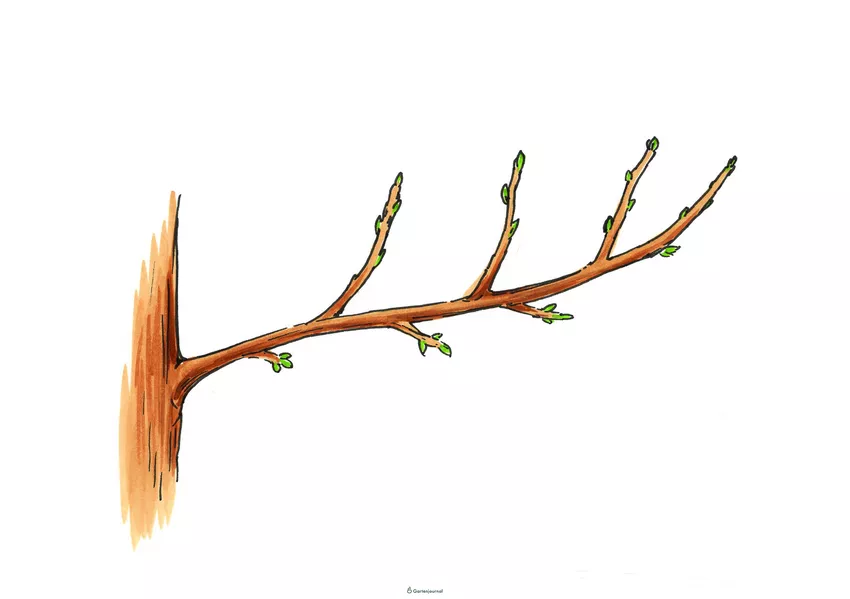- Top funding law with explanations
- Law of top promotion with practice-related hints
- Law of Vertex Promotion with Notes
Understanding the three laws of growth is critical to proper pruning of deciduous trees. Home gardeners who are familiar with the laws can predict how an ornamental and fruit tree will react to the respective type of pruning. In short, the laws of growth describe how the flow of energy in the tree is distributed among the individual buds. The more reserve substances are given to a bud, the stronger the budding. It follows from this that the more firmly the gardener is familiar with the laws of growth, the more successful his pruning care.
 Knowing the growth is important for professional pruning
Knowing the growth is important for professional pruning
Table of Contents
Show all- Top funding law with explanations
- Law of top promotion with practice-related hints
- Law of Vertex Promotion with Notes
Top funding law with explanations
Summary: Growth is strongest in the shoot tips. The higher an end bud is positioned on the branch, the stronger it sprout.
The law of top promotion applies equally to the entire tree and a single shoot. The higher a branch is in the hierarchy, the more intensively its growth proceeds. The strongest budding can always be seen at the tip of the trunk extension, main branch and side branch. Branches positioned further down in the crown and buds further down the branch sprout proportionally weaker. The figure below illustrates the regularity of the upright side shoot. With this strategy, a tree pursues the goal of winning the battle for optimal light yield against neighboring plants.

On the branch pointing upwards, the top bud is favored and sprout the strongest. In the direction of the shoot base, the shoots from the buds become gradually weaker.
Law of top promotion with practice-related hints
Summary: Buds sprout weaker on slanting shoots. The sprouting is stronger on the top than on the underside of a shoot.
If a branch is at an angle, the sap pressure is distributed more evenly than on a steep branch pointing upwards. In this case, the Top Promotion Act no longer applies. Now all the buds on the top of a branch will benefit from the broader distribution of nutrients. These eyes are preferred over the eyes on the underside because they are closer to the light.
The available energy is usually only sufficient to form short shoots. The law of growth is of crucial importance for the formation of valuable fruit wood. Orcharders tie shoots in a horizontal position to encourage fruiting wood formation. The figure below documents how the upper side conveyance affects the oblique shoot.

The reserve substances are distributed over the entire branch on the shoot that is pointing diagonally upwards. On buds on the top, stronger growth begins than on the underside.
Law of Vertex Promotion with Notes
Summary: The strongest shoots grow from the buds at the apex on arching, overhanging branches.
On bushes that are several years old, the shoots branch out more and more, after which they bend towards the ground. The worn-out, perennial fruit branches of a fruit tree fare similarly. At this stage, the law of vertex promotion comes into focus as you prune the shrubs. Since the shrub and tree are always striving to grow towards the light, the buds at the apex sprout noticeably stronger. If you cut off the old wood exactly where the young shoots will thrive, you have done everything right.

If a perennial shoot hangs over arching, the buds at the top hardly receive any nutrients. The buds at the apex now sprout the strongest.
youtubetips
The law of peak funding is closely linked to the principle of the juice scale. A young tree only forms a harmonious crown when the top buds of its leading shoots are at the same height. Together with the top bud of the stem extension, the skeletal shoots should form an angle of 90 to 120 degrees.